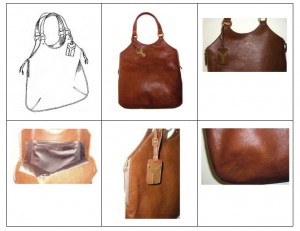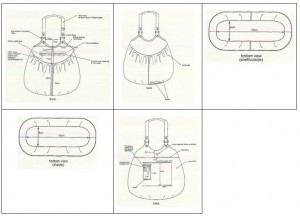Informed user perception is central in assessing Community designs’ individual character: rulings in H&M v. YSL
In its decision on a dispute concerning a design registration for a handbag, the General Court of the European Union confirms that the perception of the informed user is key in judging a Community design’s individual character, while the degree of freedom of the designer is merely an element which can reinforce or moderate that judgement.
H&M sought to have a Community design registration owned by Yves Saint Laurent (YSL) declared invalid on the grounds that the design had no “individual character” within the meaning of Article 6 of the Community Design Regulation. H&M invoked an earlier design registration to substantiate the alleged lack of individual character of YSL’s design (see pictures).
 |
 |
YSL’s contested Community
|
The earlier design |
The Cancellation Division of the Office for Harmonization in the Internal Market (OHIM) rejected H&M’s two separate requests for a declaration of invalidity. H&M appealed first to OHIM’s Board of Appeal, that confirmed both the Cancellation Division’s decisions, and then to the General Court of the European Union (GCEU), that issued its judgements in cases T-525/13 and T-526/13 on 10 September 2015.
The OHIM’s Board of Appeal had essentially found the following:
- the user of the design was an informed woman interested in handbags as a possible user;
- the two designs had features in common such as the two bags’ upper contours and handles attached to the bags by rings reinforced by rivets, but also differences in shape, structure, seams and surface finish that played a decisive role in the overall impression produced by the two bags;
- the designers of the two bags had enjoyed a high “degree of freedom” – meaning that there were no particular limits to the range of designs available, determined by the technical function of the product, by applicable statutory requirements etc.
- that degree of freedom did not, from the point of view of the informed user, cancel the significant differences in shape, structure and finish which made the two bags different.
H&M grounded its appeals to the GCEU on the claim that the BoA had erred in finding that:
1. the differences between the designs at issue were significant enough to create a different overall impression on the informed user;
2. the designers’ high degree of freedom had no impact on that finding.
The rulings of the General Court
The GCEU rejected both arguments and dismissed the appeals. The decisions point out that according to the Community Design regulation, the criteria to be followed in the assessment of individual character in the comparison two designs is an essentially four-stage examination, based on 1) the sector to which the designs belongs, 2) the informed users and their level of attention, 3) the designer’s degree of freedom and 4) the outcome of the comparison of the designs.
That said, the starting point in assessment of individual character, according to the GCEU, must always be the perception of the informed user. The degree of freedom cannot on its own give rise to an outcome in the assessment of individual character of the design: it is merely one of the aspects to be taken into consideration, which can serve to reinforce or moderate the judgement formed on the basis of the perception of the informed user.
Practical consequences
The two decisions confirm that the strength of a Community design right lies mostly in its individual character, and that this feature depends mostly on the perception of the relevant consumer.
When filing for Community registration of a design, it is also important to bear in mind this decision when choosing the images to be included in the application: had the photographs in the YSL application been less detailed, it might have been harder for the OHIM’s BoA and for the General Court to appreciate the details (such as surface finish and seams) that were recognised as making the difference between the two designs in the eyes of the informed user.
29 October 2015
